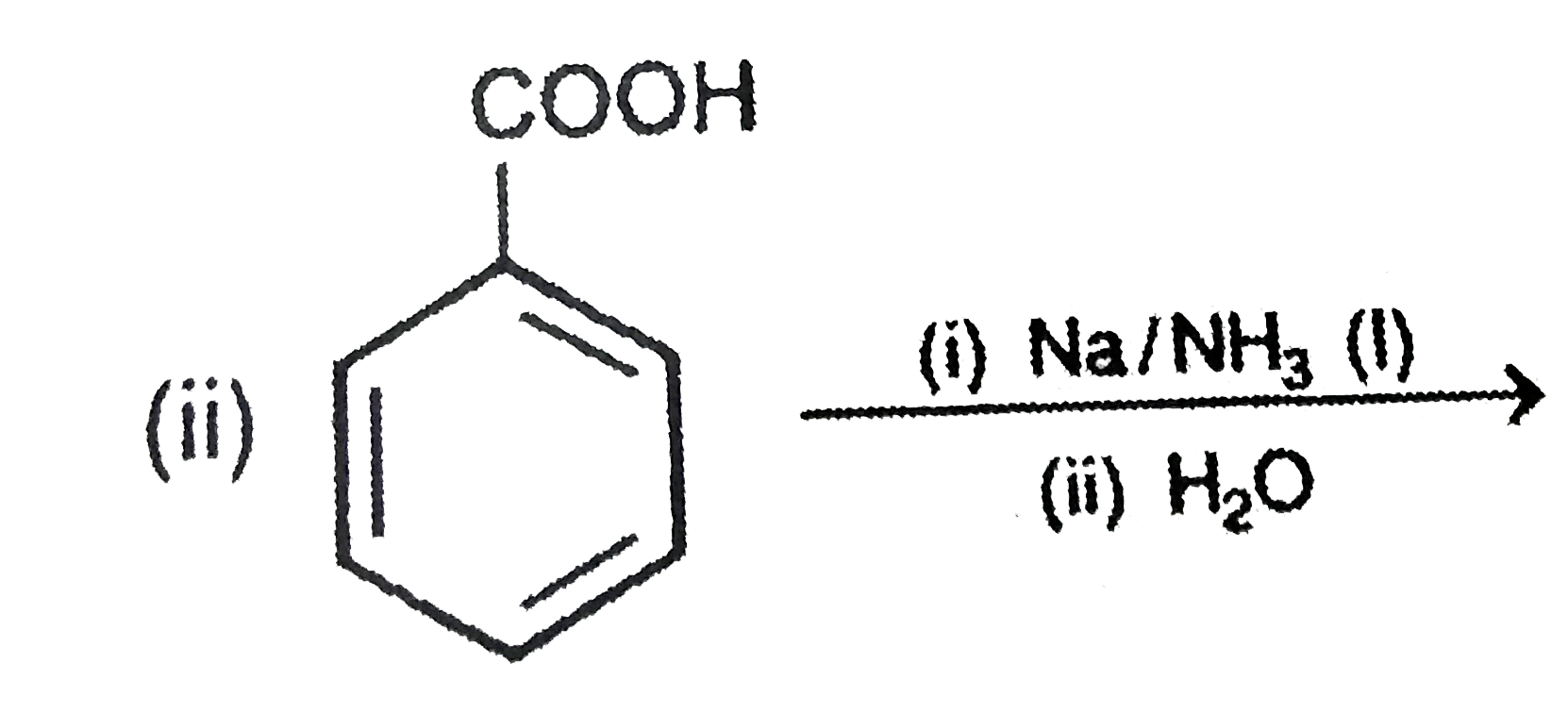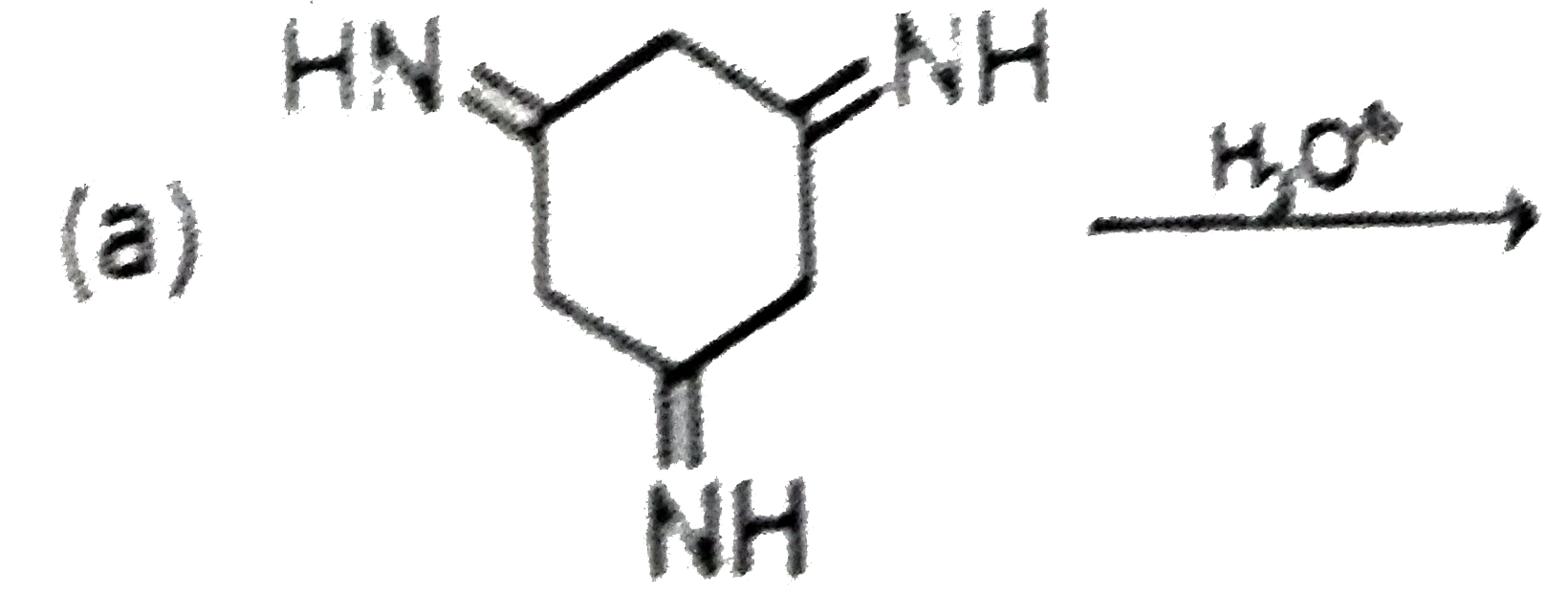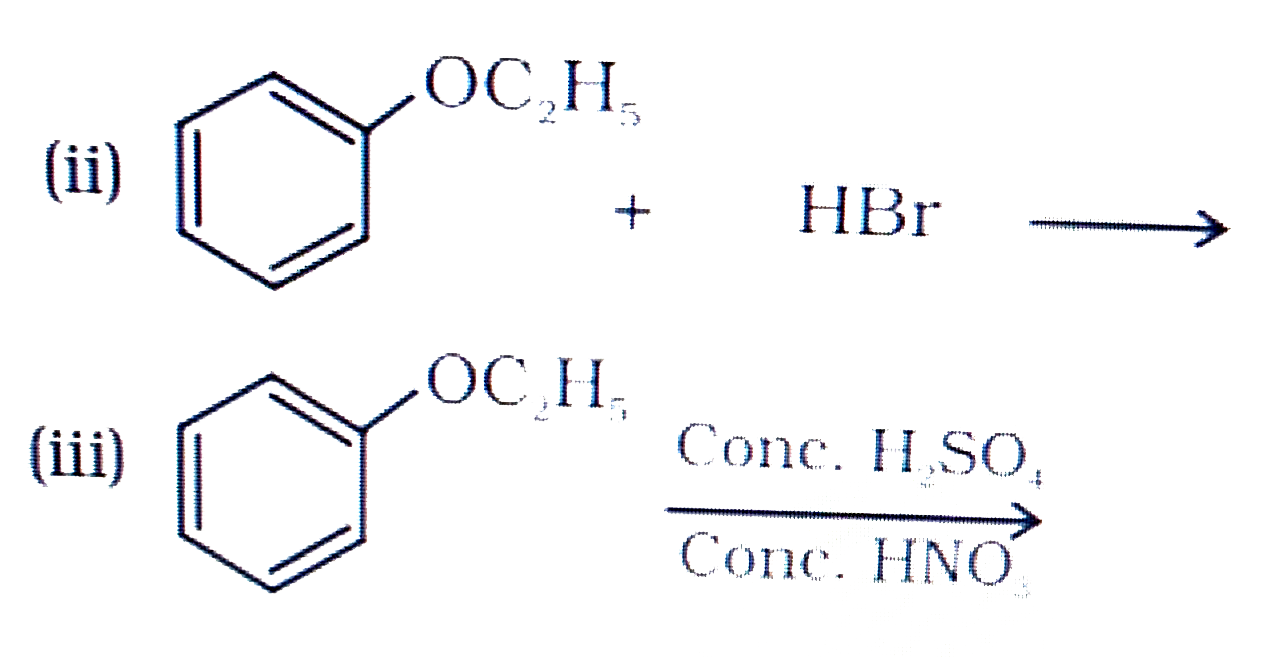Complete the following :
CH3−CH2−O−C6H5+HI(Conc.)→
To complete the reaction of ethyl phenyl ether (CH₃-CH₂-O-C₆H₅) with concentrated HI, we will follow these steps:
Step 1: Protonation of Ether
The first step involves the protonation of the ether oxygen by the hydrogen ion (H⁺) from HI. The oxygen atom in the ether has two lone pairs of electrons, which can attract the H⁺ ion, leading to the formation of an oxonium ion.
Reaction:
CH3−CH2−O−C6H5+H+→CH3−CH2−O+−C6H5
Step 2: Bond Cleavage
In the oxonium ion formed, the bond between the oxygen and the ethyl group (CH₃-CH₂) is weaker compared to the bond between the oxygen and the phenyl group (C₆H₅). Therefore, the bond between the oxygen and the ethyl group will break, facilitated by the iodide ion (I⁻) from HI.
Reaction:
CH3−CH2−O+−C6H5+I−→CH3−CH2−I+C6H5OH
Final Products
The final products of the reaction are ethyl iodide (CH₃-CH₂-I) and phenol (C₆H₅OH).
Complete Reaction:
CH3−CH2−O−C6H5+HI→CH3−CH2−I+C6H5OH
Summary of Reaction:
- Ethyl phenyl ether reacts with concentrated HI.
- The ether is protonated to form an oxonium ion.
- The weaker bond between the ether oxygen and the ethyl group breaks, leading to the formation of ethyl iodide and phenol.
---
The first step involves the protonation of the ether oxygen by the hydrogen ion (H⁺) from HI. The oxygen atom in the ether has two lone pairs of electrons, which can attract the H⁺ ion, leading to the formation of an oxonium ion.
CH3−CH2−O−C6H5+H+→CH3−CH2−O+−C6H5
In the oxonium ion formed, the bond between the oxygen and the ethyl group (CH₃-CH₂) is weaker compared to the bond between the oxygen and the phenyl group (C₆H₅). Therefore, the bond between the oxygen and the ethyl group will break, facilitated by the iodide ion (I⁻) from HI.
CH3−CH2−O+−C6H5+I−→CH3−CH2−I+C6H5OH
The final products of the reaction are ethyl iodide (CH₃-CH₂-I) and phenol (C₆H₅OH).
CH3−CH2−O−C6H5+HI→CH3−CH2−I+C6H5OH
- Ethyl phenyl ether reacts with concentrated HI.
- The ether is protonated to form an oxonium ion.
- The weaker bond between the ether oxygen and the ethyl group breaks, leading to the formation of ethyl iodide and phenol.
Similar Questions
Complete the following reactions :
(i) CH3−CH2−C≡C−CH2−(CH2)6−CH2OH(i)Na/NH3(I)−−−−−−−−−−→(ii)H2O
(ii)
View SolutionComplete the following reaction :
C6H5COCl+(CH3)2Cdto
View SolutionComplete the following reactions : (i) CH3CH2NH2+CHCl3+alc.KOH→
(ii) C6H5N+2Cl−H2O−−−−−−→Room temp.
(iii)
View SolutionComplete the following
CH3COCH2CH3+HIRedP/423K−−−−−−−→
View SolutionComplete the following reaction :
C6H5ONa+CH3Br→
View SolutionComplete the following : (i) C6H5COCl(CH3)2/Cd−−−−−−−→
View SolutionComplete the following
(a)
(b) Ph−O−CH=CH2H3O⊕−−−→A+B
View SolutionPredict the products of the following reactions:
(i) CH3−CH2−CH2−O−CH3+HBr→

(iv) (CH3)3C−OC2H5HI−−→
View SolutionComplete the following chemical equations :
(i) CH3COOC2H5+NaOH→
(ii) CH3COOH+NaOH→
(iii) C2H5OH+CH3COOHConc. H2SO4−−−−−−−−→
View SolutionComplete the following reactions
CH3CH=CH2mCPBA−−−−→AC2H5MgBr−−−−−−→H3O+B
View Solution
